Hey everyone! I am still working my blog series on psychedelic neuroscience, but this a somewhat tedious undertaking. Since the topic requires knowledge of certain technical aspects, I decided to review one of my favorite recent articles!
Could a Neuroscientist understand a Microprocessor? *
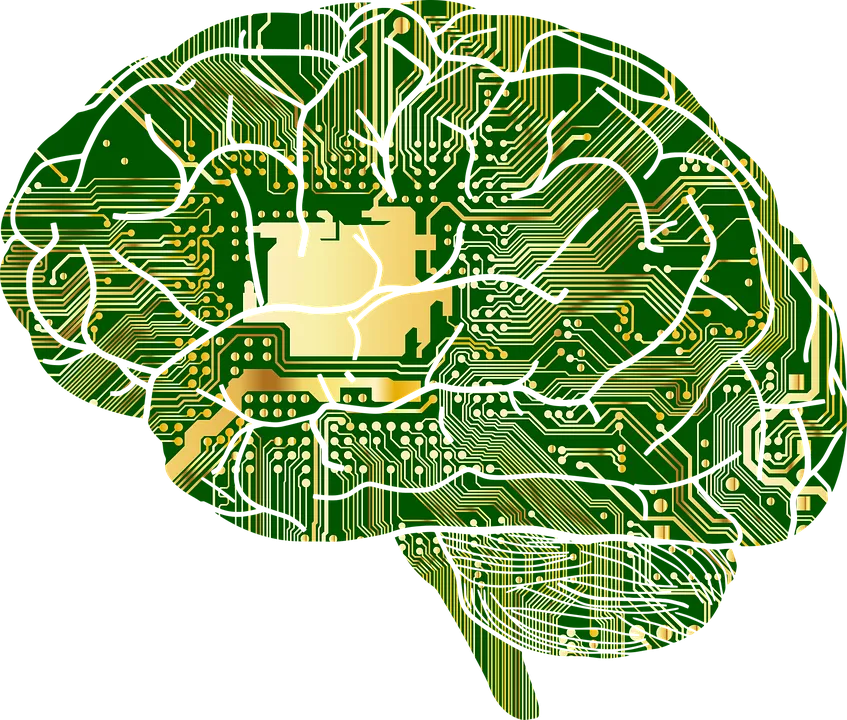
Many researchers (and most bloggers) will typically depict science in terms of technological development, but I want you to appreciate the beauty of an experiment that draws attention to how limited our understanding of intelligent behavior actually is. Jonas and Kording (2017) * demonstrate this in a hilarious manner by investigating how a Commodore 64 microprocessor generates the behaviors of Donkey Kong (1981), Space Invaders (1978), and Pitfall (1981) with all the modern tools of cognitive neuroscience.
It has become one of my favorite articles because it demonstrates the typical workflow of neuroscience and how current attempts to reconstruct the mind from Big-BrainData ( e.g. the Human Brain project) may be conceptually limited! This is important to know because reverse engineering the brain is on the forefront of AI development. So let’s dive into differences between artificial systems and natural systems and how a neuroscientist would dissect a microprocessor. Consider this an introductory blogpost to cognitive neuroscience .
Defining Behavior:

The ultimate goal of cognitive (neuro)science is to isolate discrete types of behavior which correspond to discrete underlying mechanisms. First you must define the processing unit, this could be a transistor, a neuron, an organism or even a superorganism. The basic principle here is that the unit will receive an input (the stimulus) and produce an output (behavior); the process describes an operator that predicts the output based on the input. As you may have noticed, this draws on an allegory of: imagine that the brain works like a computer. Indeed cognitive neuroscience was inspired by the development of computers in the 60s and this behavioral approach hasn’t much changed since then. Several cognitive processes make use of such operationalization, for instance attention, executive control or working memory, so it is warranted to ask whether a neuroscientist could understand a microprocessor. This approach isn’t so much concerned about how behavior works in a complex natural environment, but how single behavioral processes function in a simplified control environment. During my bachelors work I conducted behavioral experiments on mice. These mice were genetically manipulated to have dysfunctional NMDA-receptors in the Hippocampus, which meant that they were incapable of learning spatial information. Here you can see how this is tested in the Morris Water Maze:
Test group:

Control Group:

The mice were training all day, yet as you can see the test mouse was far worse at finding the beaconed platform than his control counterpart. The set-up of these experiments aims to reduce as many behavioral components as possible, but even tasks as simple as the water-maze probably require multiple cognitive processes to function simultaneously. Looking at individual atari games seems to be the equivalent of how neuroscientists conduct business. Like the brain, the microprocessor is of course capable of doing much more than these, but the aim of current paradigms is set on isolating these behaviors in a reduced environment. We should assume however, that all these components are quite intertwined when we make decisions in everyday life. Isolating a few behaviors from a microprocessor should still be far easier, since the underlying complexity of this system is presumably far simpler than that of a brain. Limiting the behavioral measures to three Atari games reflects the limited nature of neuroscientific behavioral measures quite well in my opinion. It would be more sensible to run individual program scripts of these games, but there is no such equivalent method available in cognitive neuroscience.
Microprocessors vs. Humans:
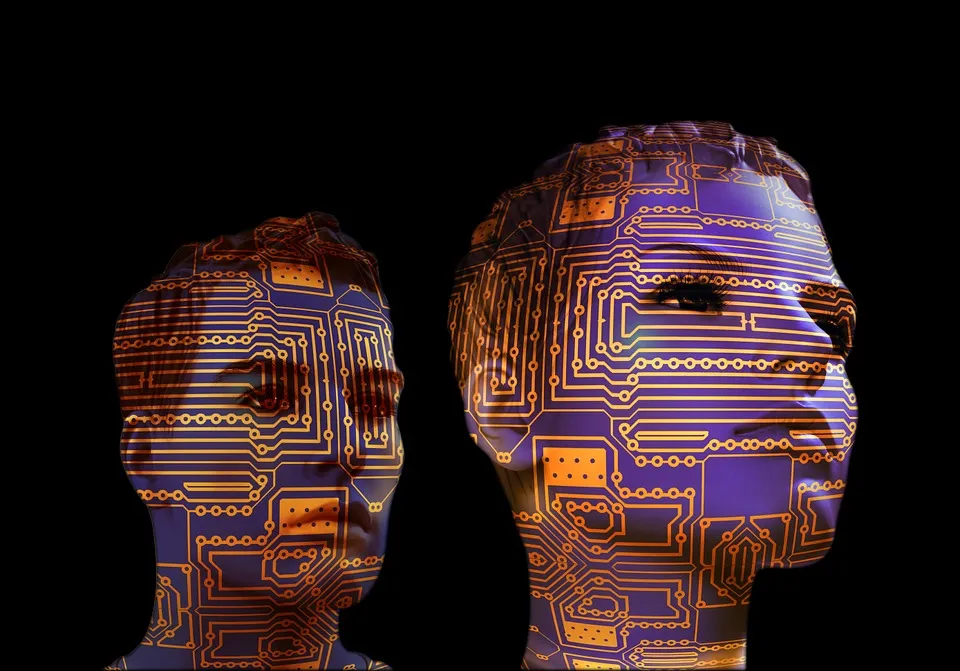
Microprocessors are built to perform a specific function whereas our brain functions evolved under loose evolutionary constraints with far greater degrees of freedom. Survival of the fittest is a very vague instruction, as different species can attain unique strategies for achieving this goal. Our systems contain far more variance than an engineered one. Transistors are deterministic, whereas neurons behave quite randomly. When presented with the same stimulus, the neuron will only produce the same output on average!
Furthermore there is only one principal kind of transistor, whereas there are over hundred different types of neurons, each with a different biochemical make-up, different types of activation channels and different wiring-patterns. Neurons have about 10 000 synapses; far more outputs than a simple transistor. Transistors have a straightforward function, whereas it still hasn’t been fully deciphered how an individual neuron encodes information. There are several different class neurons with different chemical properties, which may encode information differently.A microprocessor as a model organism exhibits far less complexity than a biological organism. Understanding its behavior should be easier, right?
Connectomics:
The goal of the human brain project is to eventually run a full brain simulation. This will require a fully reconstructed 3-dimensional computation model. After behavioral analyses, neurobiologists dissect the mice, extract their brains and cut these into thin microslices. Unlike the microprocessor, the brain is organized in three dimensional space. Not to worry. The problem is that the brain Individual neurons can be identified under the microscope with various staining methods. Winfried Denk and colleagues at the Max Plack Institute have also come up with an automated process wherein a mouse brain is cut into tiny cubes that are individually scanned across all three dimensions via electron microscope. This enables scientist to reconstruct the three dimensional structure on a computer interface:

As you can see, the microprocessor was also dissected and the silicon components were chemically stained and identified with a microscope:
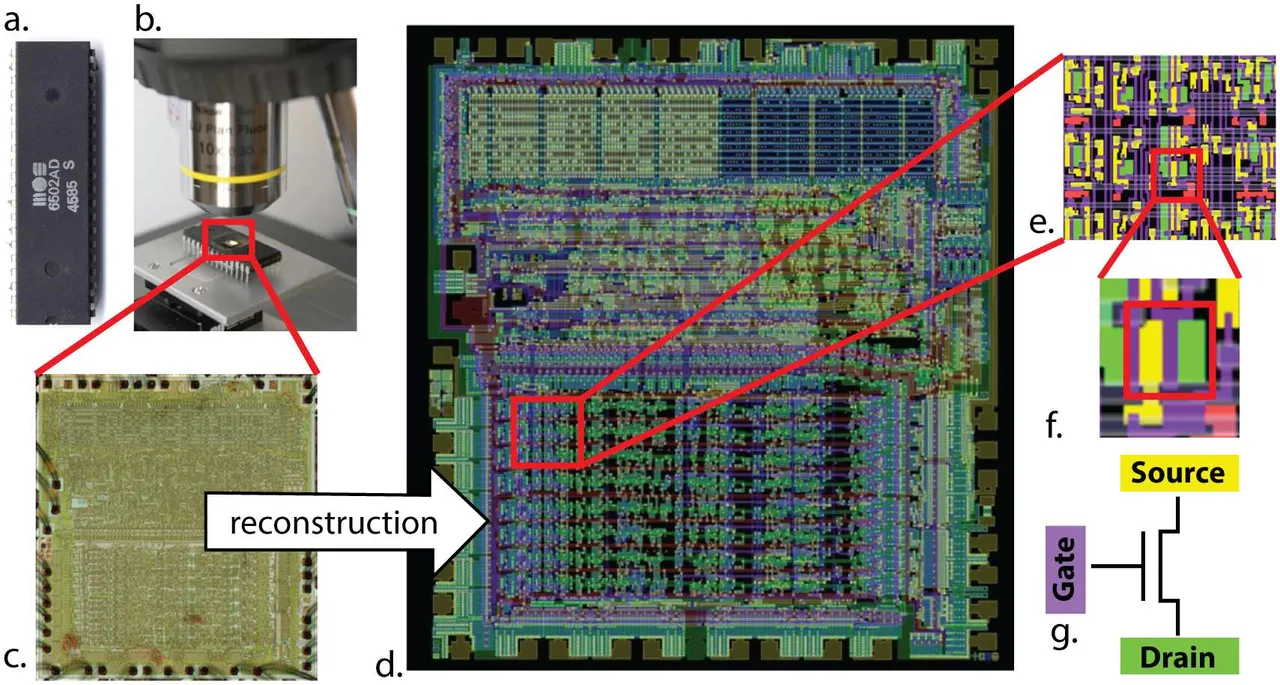
Source:*
They stained the processor with silicon dies and examined it under light microscope. Computer vision algorithms identified the metal and silicon regions and were able to reconstruct the transistors. This approach proved successful, since they were able to reconstruct and emulate the microprocessor!
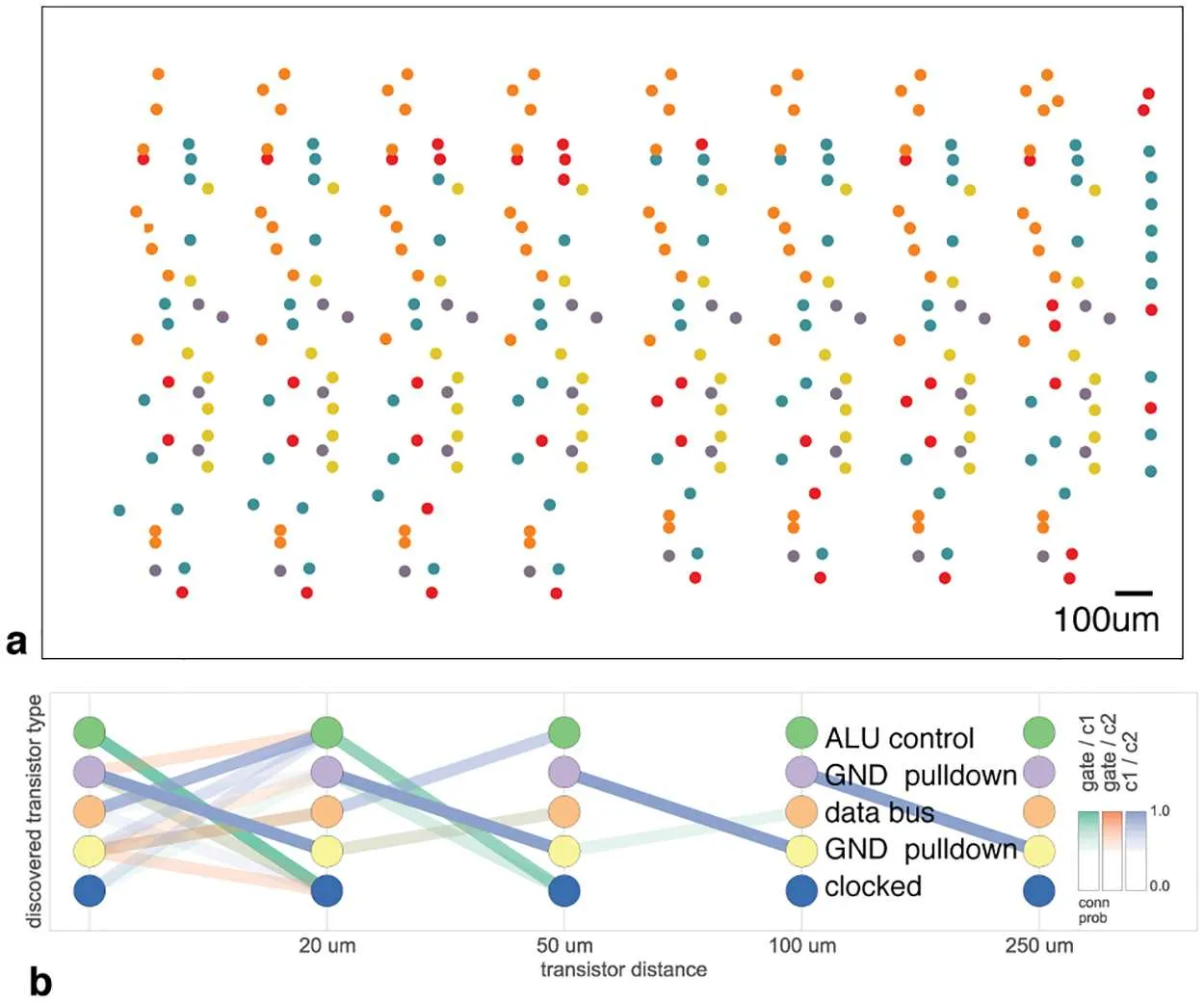
Source:*
Lesioning:
Lesion studies are the foundational method of neuropsychology. There are many famous patients who obtained head injuries that caused peculiar changes in cognitive functioning. Famous accounts are of Phineas Gage and E.V.R., both of whom obtained severe damage to the orbitofrontal lobe.
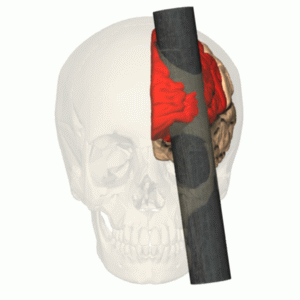
The patients obtained sever loss to executive functions such as action planning, but their IQ remained intact. E.V.R. used to be a successful accountant, but after his lesion he lost his job, divorced his wife and married a prostitute. Other interesting cases can be found in The Man who mistook his wife for a hat , a novel by Oliver Sacks. Individual case studies are now outdated, because they aren’t comparable across the population. Each individual adapts differently to their injury, as many functions may quickly be taken over by other brain regions. Contemporary neuroscience no longer assumes individual brain functions to be localized within discrete brain regions. It has become far more plausible that several different brain regions perform complex interactions with one another, such interactions may even include other individuals within a complex environment. It makes far more sense nowadays to analyze complex interactions than to point at the amygdala and proclaim: Look! We found the center of emotions! In order to look at such interactions, one can induce temporary lesions with TMS coils. This technique uses magnetic coils to inhibit individual brain regions, but only on the outer cortex.
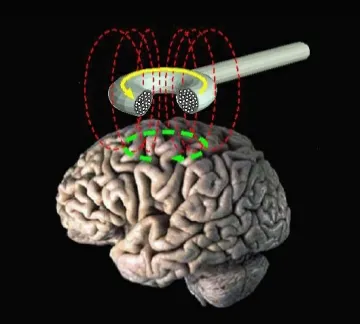
In organisms such as mice, individual neurons can now be turned on and off with optogenetics. This method is comprised of a genetic modification that is too invasive for humans at the moment.
The authors investigated the effects of destroying individual transistors on the computer games behavior:
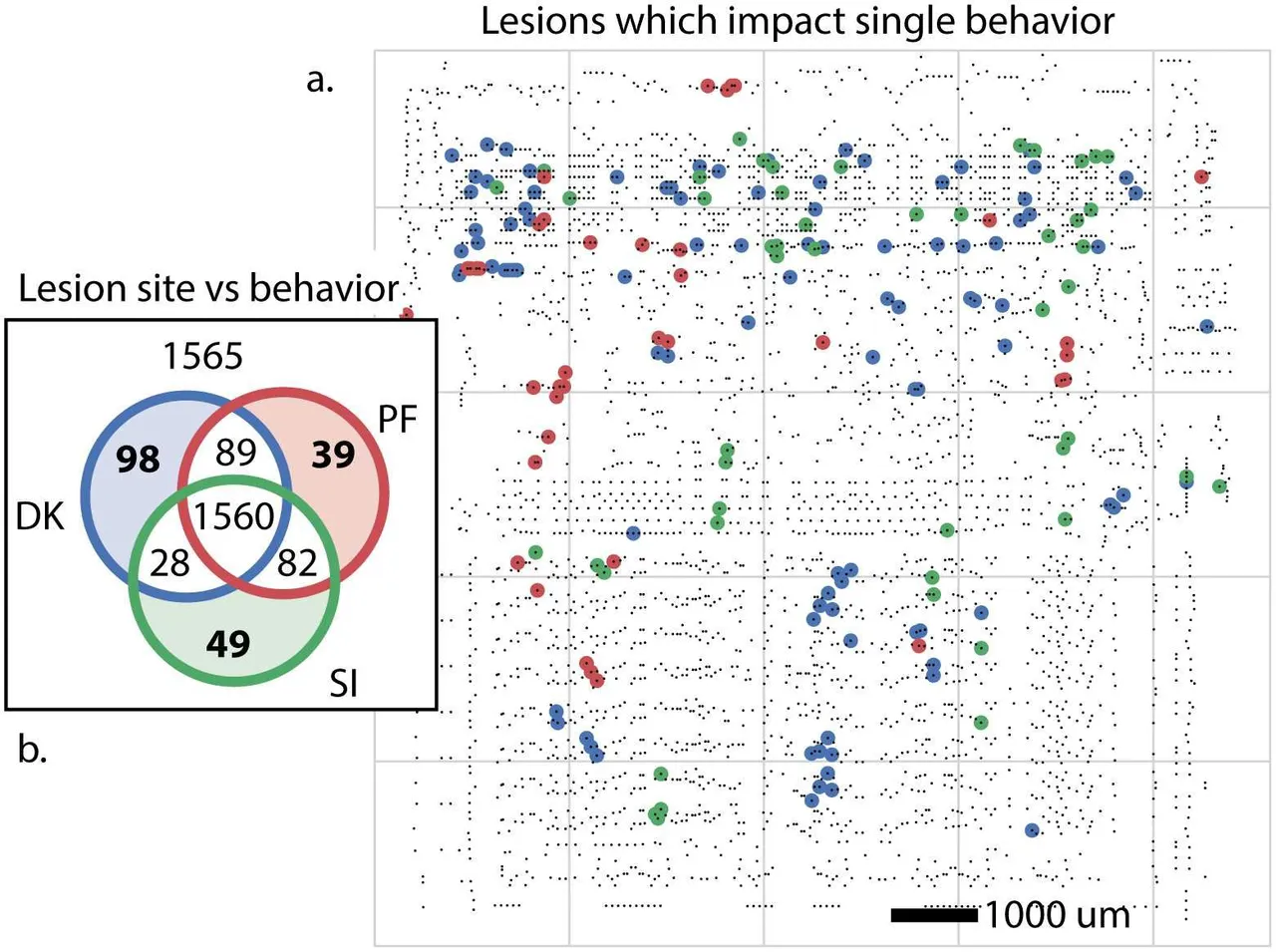
Source:*
As you can see there is a large overlap between different games (behavior). This is because systems may heavily depend on one another, but this doesn’t necessarily describe its function. For instance I may heavily depend on the availability of oxygen, but oxygen does not explain my behavior in every given context. As you can see, most transistors are so fundamental that they are required for all three atari games. This reflects how neurobiologists go on about their research quite well. Individual brain regions/neurons are turned on or off, to see how the organism changes its behavior. This still has many caveats.
Single unit recording:
Knowing how something is built still doesn’t describe how it works. Understanding how something works requires a model that describes how information is propagated throughout these structures. Since neuron ensembles aren’t composed of uniform units such as transistors, this problem already arises at the neuronal level. As mentioned before neurons have very individual firing-properties and this problem is addressed with single cell recordings:
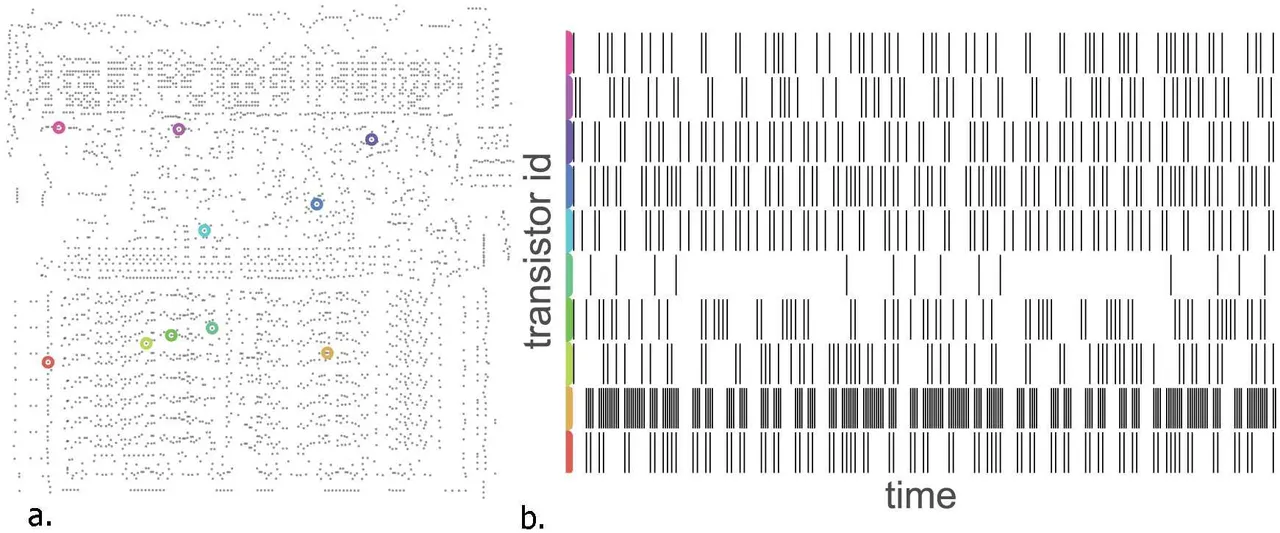
Source:*
After the firing-rate (or spikes) are acquired for the full spectrum of possible input stimuli, neuroscientists will want to know when the neuron (or in this case a transistor) is most likely to fire. They caluclate tuning-curves which tell us which information the neurons will respond to with the greatest probability. The information score can then be correlated to behavior. This was done likewise for the microprocessor:
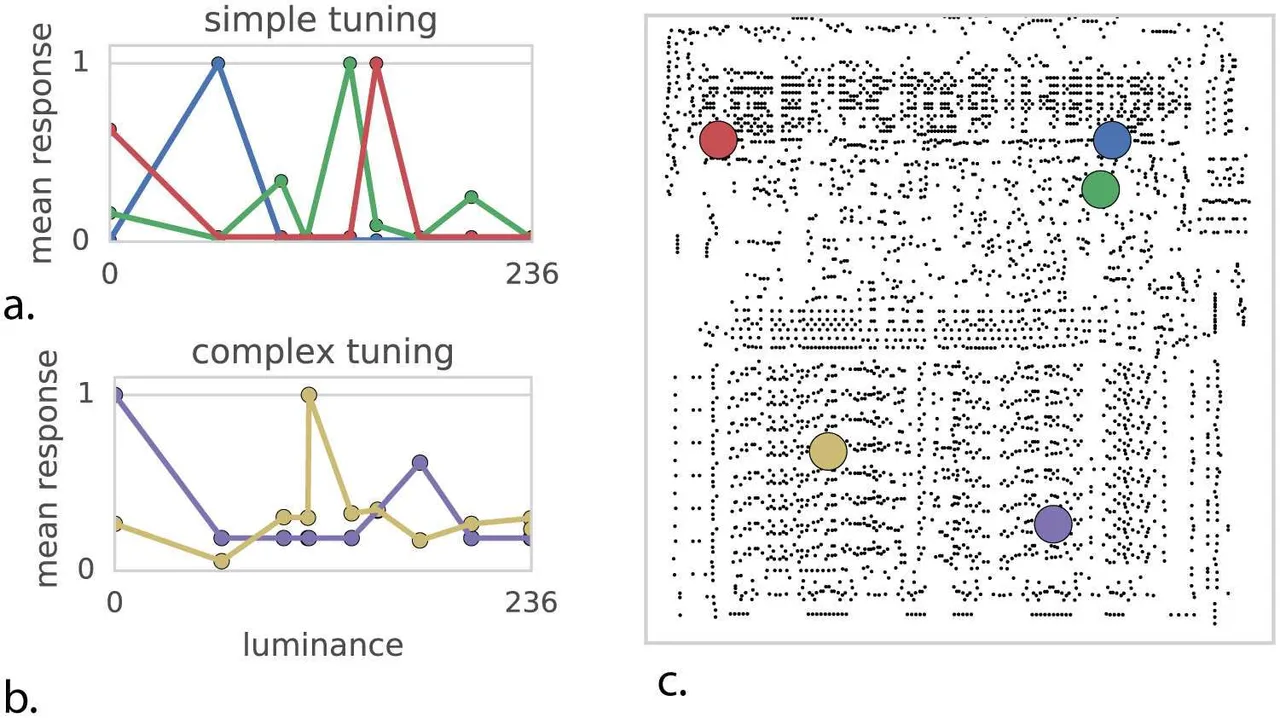
Source:*
Local activity:
Knowing how single units correspond maximally to a given attribute of behavior still doesn’t tell us much about how the behavior is orchestrated. Information isn’t just a property of a single neuron, but of neuron collectives that excite each other. The two principle ways of isolating mechanisms that correspond to distinct behaviors are is in time (temporal) or space (spatial). EEG has a high temporal resolution, whereas fMRI has a high spatial resolution. When many neurons fire at once, they generate an electric field called ‘Local Field Potential’. Sudden changes in these potentials are measured with EEG, but this isn’t ver accurate at localizing brain activity.

EEG-recordings were performed on the microprocessor as well:
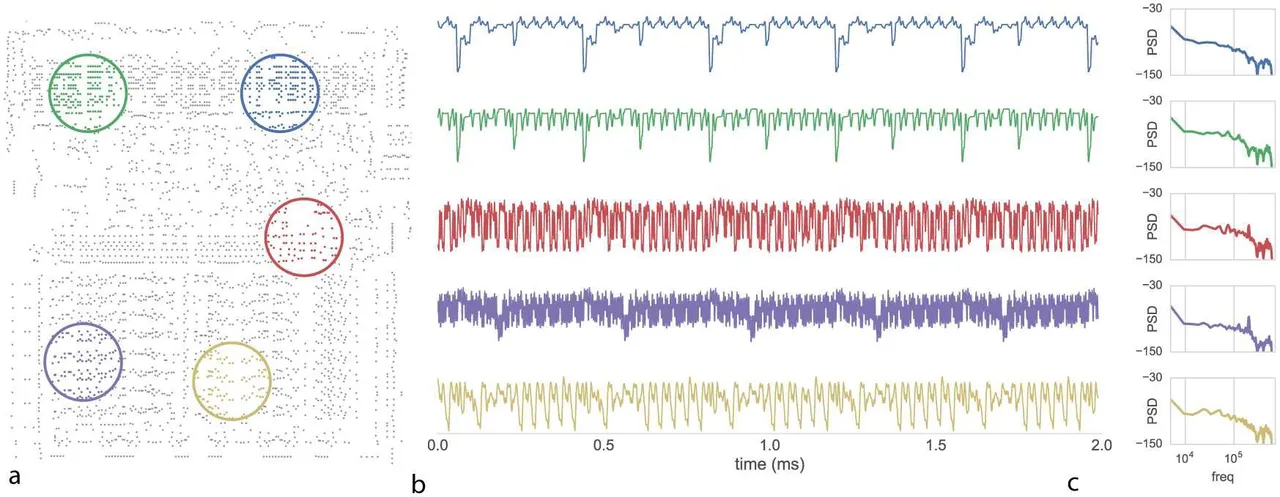
Source:*
Connectivity analysis
Spatial localization is performed with fMRI, which measures changes in the regional blood flow. These kind of recordings tempt lay people to make various far-fetched claims about brain regions because MRI machines can generate all the nice brain pictures. Psychologists have found that simply by showing a picture of a brain with a highlighted region will convince people that the findings are true. It is worth noting that fMRI measures the BOLD-signal, which is a statistical probability of increased blood flow and not the actual firing of neurons (action potentials). The BOLD signal captures the average amount of blood flow during a behavioral condition, the signal is thus a mixture between input signals that neurons are receiving and the output signals that a neuron is emitting.
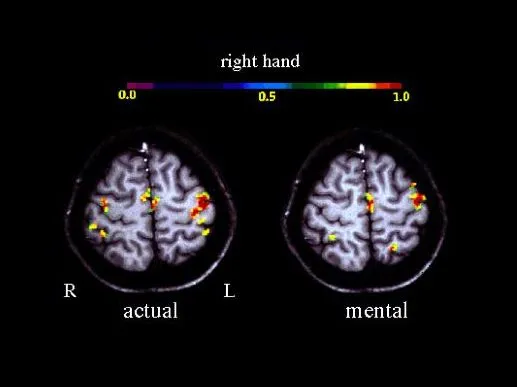
These pictures of labeled brain regions are quite deceiving as to the true nature of what is being measured.
In the same manner as Neuroscientist use EEG and fMRI to measure the average activity of brain regions, the authors of this paper measured local activities of the microprocessor:
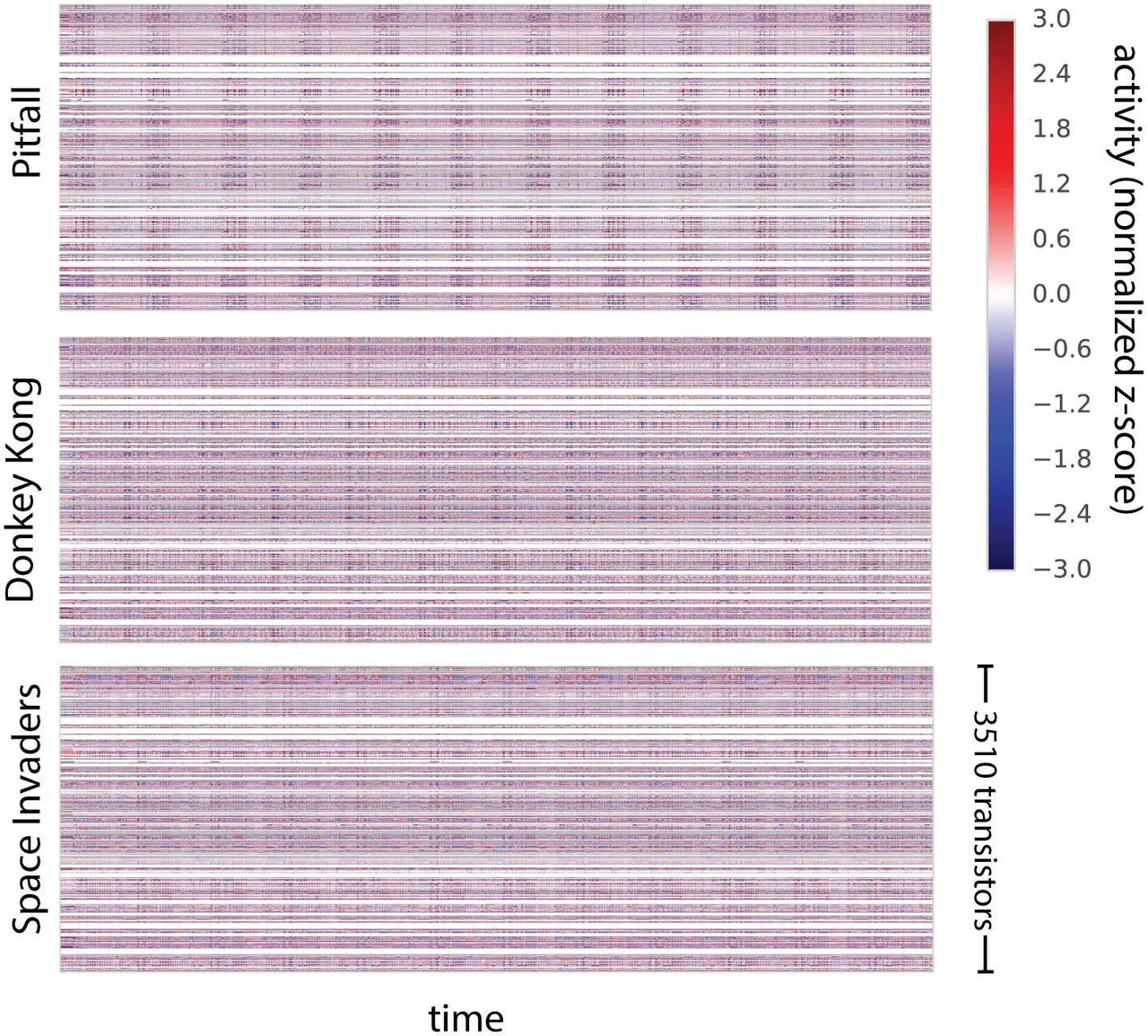
Source:*
For the reasons I mentioned previously, this still doesn’t sufficiently describe what the microprocessor is doing! When neuroscientists speak of functional connectivity, this means that they analyze which brain regions are active simultaneously during a behavioral condition. This says nothing about what operations the regions are doing, only that they are somehow connected to one another (on average).
Causality
This lack of insight into whether the brain signals that are being measured reflect cause or effect is a serious problem in neuroscience! One solution is to analyze statistic causalities. The idea is to look at the data-series of region X and see whether it contains regularities that can predict the data-series of region Y. With machine-learning, I can imagine great advances in this approach.
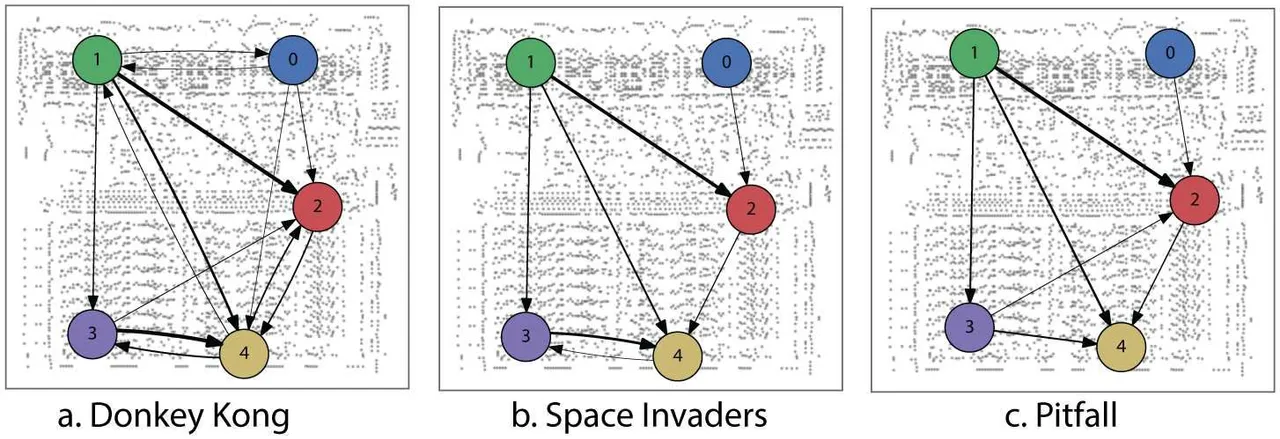
Source:*
Dimension reduction
Another problem that comes with whole brain imaging in neuroscience is the sheer amount of raw data. Like I said before, we are trying to isolate discrete behaviors so the Big-BrainData that comes out of whole brain recordings is way too elaborate. The brain is busy maintaining itself and we only want to find processes that correspond to simple decisions. It’s like finding a needle in a hay stack. To overcome this problem, neuroscientists will try to see whether they can reduce the dimensionality. A data-scientist could give a whole course on this, since this also quite relevant for machine learning, but the idea is to see whether the activity of certain units are dependent of one another. If they are, there is no need to model them as separate independent variables and you can construct a variable that captures both of these units activity. Anyway with the help of some linear algebra the authors could isolate a reduced amount of relevant dimensions, which they correlated to the microprocessors behavior:
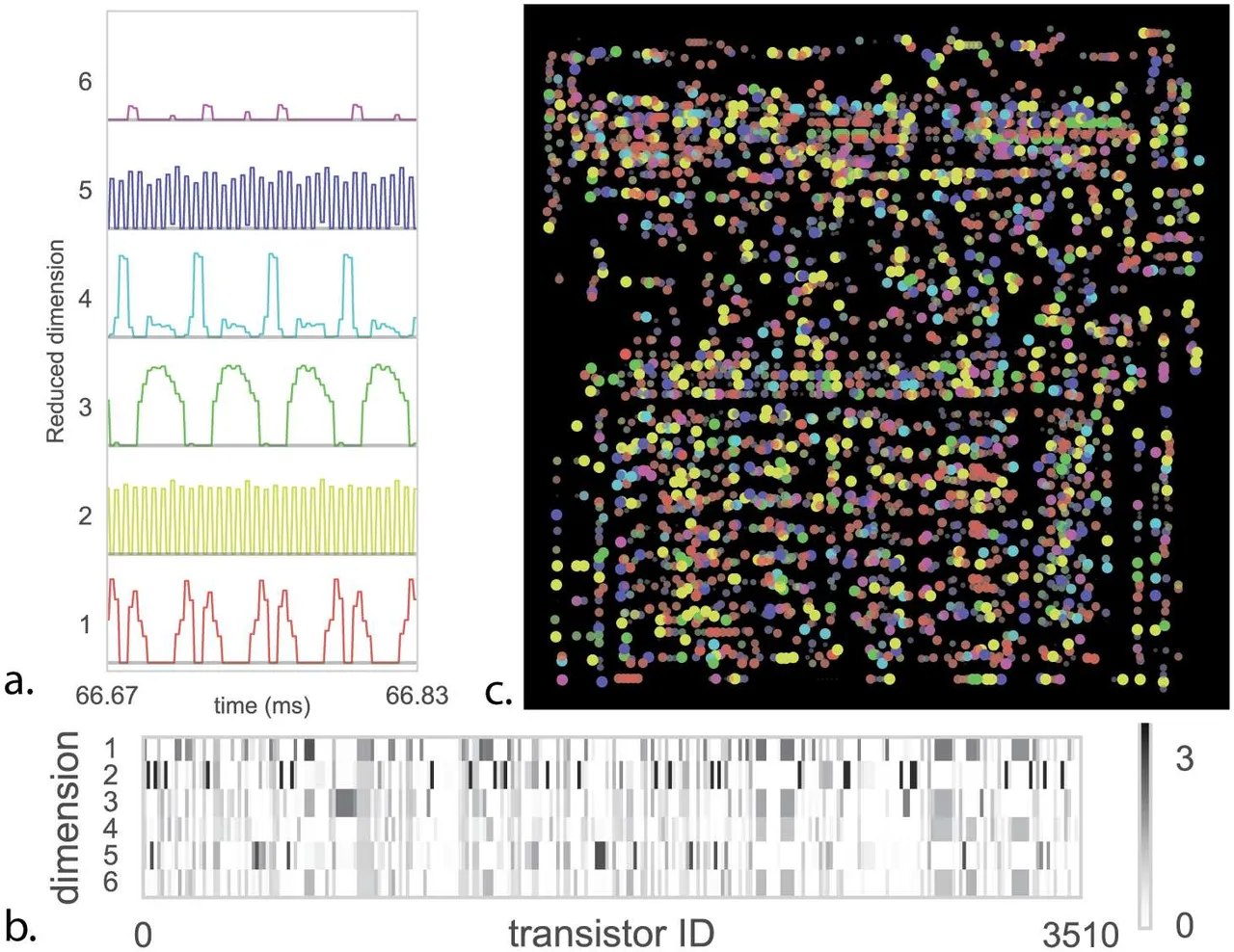
Source:*
Conclusion:
The most pressing issue of cognitive neuroscience is not actually knowing what the brain is supposed to be doing. With an artificial intelligence we know exactly what we want the system to do, for instance beating Garry Kasaprov at chess or becoming the ultimate GO master.
As the authors point out:
Microprocessors are among those artificial information processing systems that are both complex and that we understand at all levels, from the overall logical flow, via logical gates, to the dynamics of transistors
So you have to consider that we can be certain that a microprocessor has an intelligently built purpose, whereas our brain doesn’t!
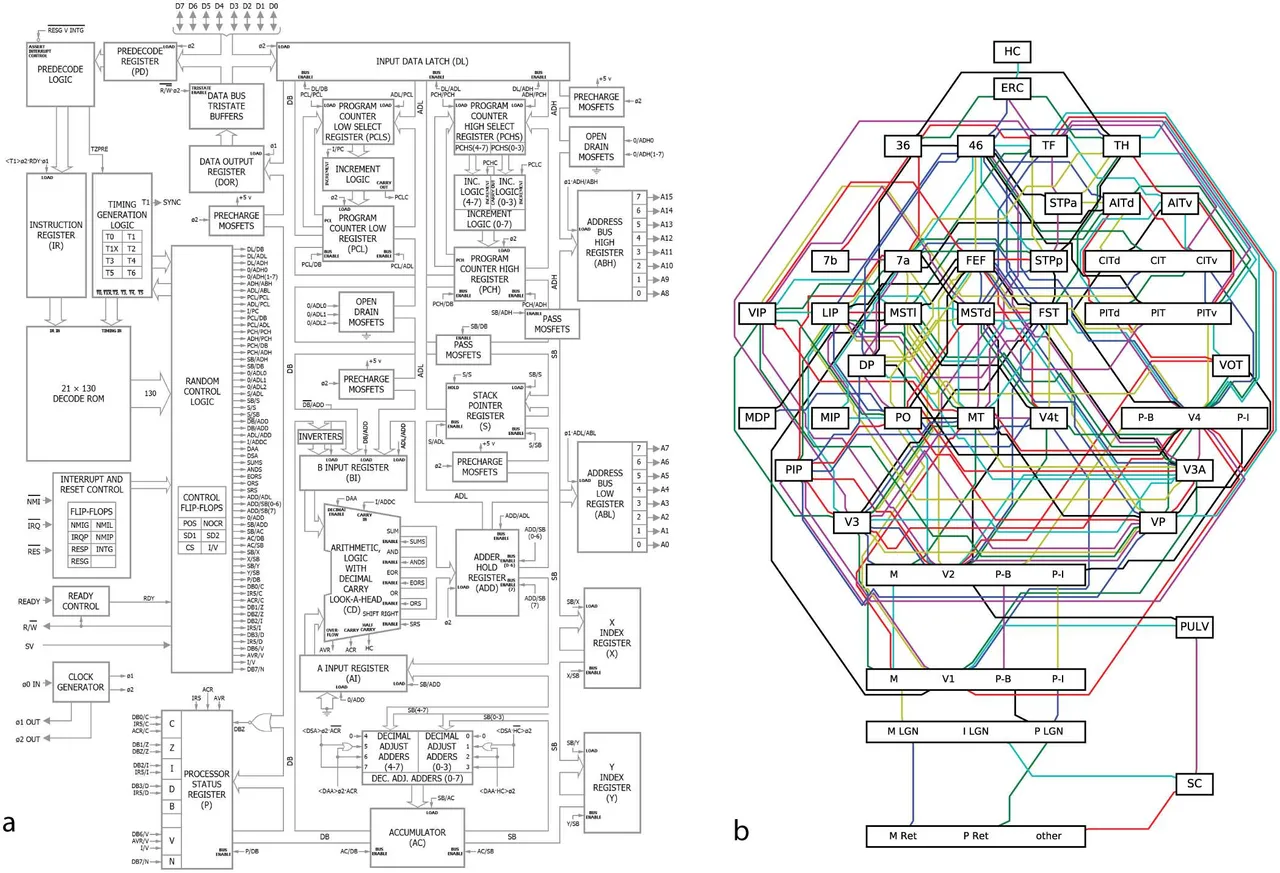
Source:*
This image shows a well-defined blueprint of a microprocessor (left) and a state-of-the-art functional blueprint of a brain (right). As you can see, all these methods yield a vast complicated network of interesting data-structures but these are hardly sufficient for the construction of a fully functional program that runs donkey kong.
So can a Neuroscientist understand a Microprocessor?
NO!
If a neuroscientist can’t understand how a microprocessor works, than how could they possibly figure out what the brain is doing?
You might be inclined to say that I have left out machine learning from this picture and I will admit that machine learning is a powerful new statistical tool.
But, machine learning relies on supervised learning, which means that it will only solve problems where we can define discrete categories to classify. Unless we have a full understanding of what these categories are, the machine learning algorithms will inherit our biases. Thus how do we know that the machine learning algorithm isn’t just overfitting data to predict simple behaviors?
What does it mean to understand behavior?
According to David Marr (1982) [1] there are three levels of modelling that encompass our understanding of behavior:
- The computational level: What is the problem that the system is trying to solve?
- The algorithmic level: How is the system trying to solve it? What would a solution look like?
For the brain and microprocessor this is a question of how internal representations are manipulated. - The implementational level: What is the physical substrate of these computations?
(e.g. neurons, connectivity, transistors etc.)
These criteria remain unanswered in a purely data-driven approach!
Concluding Remarks and Future directions:
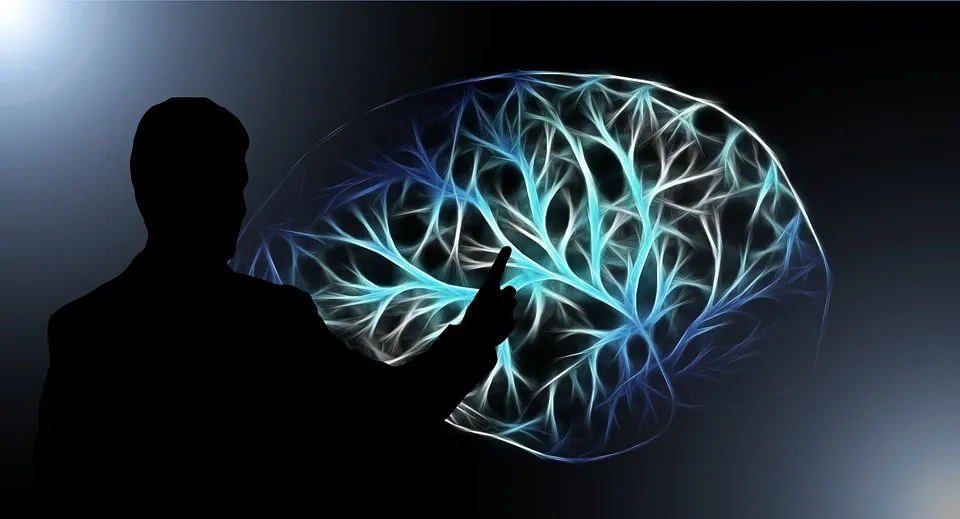
Understanding the human psyche has been the major theme of philosophy for centuries and recently this endeavor turned into the question of how our brain and mind are integrated. With the rise of psychology it is also a matter of how our brain generates behavior? In my opinion, these questions are intertwined because our mind arises within a complex interaction between our brain, body and the environment. With modern neuroimaging techniques, theory driven science is being swept aside to create data-driven science. This isn’t all bad, every scientist loves good data, but we shouldn’t forget theories either. Nowadays, mentioning Freud is frowned upon in academia but one must realize that his theories fundamentally shaped the societal understanding of the psyche. A theory must go beyond publishing an image of a brain region that seems to do something with some behavioral condition or other and give a more extensive explanation of how this generates behavior!
We can’t just point to the amygdala and proclaims we have found the center of all emotion. The truth is far from it. Neuroscience is currently locked in two camps, between Representationalism and Enactivism. Representationalism sees brain functions as a matter of internal representation, an approach that mainly tries to locate data-structures within the brain from which consciousness (somehow) emerges. Whenever I go to a human brain project presentation I always wonder how they think a brain simulation will be able to explain consciousness on account of simplified behavioral measures conducted on mice or rats.
Enactivism on the other hand places consciousness in an embodied brain that is embedded within a complex social environment. Consciousness is depicted as a dynamically developing interactive dialogue between our brain and the environment.
As you may have guessed from this post, I am more in favor of embodiment.
I believe that theories such as predictive processing will come a long way in giving a full account of human behavior. This theory holds that our brain functions in a manner that seeks to reduce our uncertainty over our environment and enacts exploratory behavior.
Moreover I am interested in figuring out the effects of psychedelics, since these are quite numerous and extend across many different explanational levels. Mapping these levels onto each other may ultimately help explain consciousness in the process (more on this later)!
Anyhow, if you enjoyed this article please re-steem cause I don’t have many followers at the moment. I put quite a lot of effort into it, but quality over quantity I say!
Image sources:
**Figures were taken from **:
Jonas, E., & Kording, K. P. (2017). Could a neuroscientist understand a microprocessor? PLoS computational biology, 13(1), e1005268.
Images that were used for illustrative purposes were acquired from:
Luca Boldrini B "commodore 64". July 29 2009. Online image. Flickr. March 12 2018. https://www.flickr.com/photos/lucaboldrini69/4841984952
BagoGames " Green Lit Space Invaders Film". July 24, 2014. Online image. Flickr. March 12 2018. https://www.flickr.com/photos/bagogames/14750012323
Microsiervos " Donkey Kong Arcade". August 19, 2015. Online image. Flickr. March 12 2018. https://www.flickr.com/photos/microsiervos/20708744872
Melissa DoroquezBy: Melissa Doroquez " Pitfall at the Game On Exhibit". August 15, 2006. Online image. Flickr. March 12 2018. https://www.flickr.com/photos/merelymel/230513378
Pixabay
Maxpixel
&
Wikimedia Commons
Literature Sources:
Jonas, E., & Kording, K. P. (2017). Could a neuroscientist understand a microprocessor? PLoS computational biology, 13(1), e1005268.
Bechara, A., et al. (1994). "Insensitivity to future consequences following damage to human prefrontal cortex." Cognition 50(1): 7-15.
Marr, D. (1982). Vision: a computational investigation into the human representation and processing of visual information. W. H. WH San Francisco: Freeman and Company.